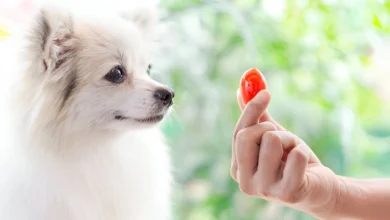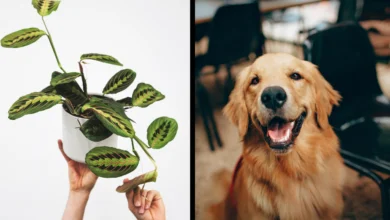Dog Cut Paw? Here's What to Do
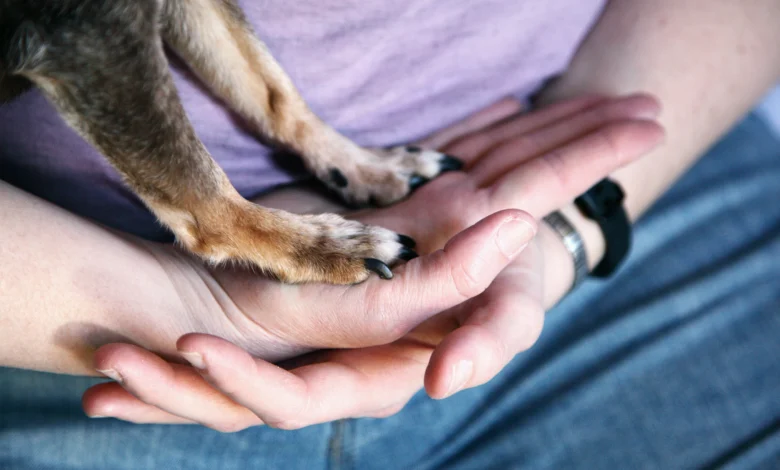
You’re halfway through your afternoon walk when your furry friend suddenly limps, whining softly. Your heart sinks as you notice a small injury on their foot. Those padded paws carry them through adventures, but even minor scrapes can turn a joyful trot into a struggle. How do you help them heal while keeping calm?
Paw pads are built tough, yet sharp rocks, hot pavement, or debris can leave painful wounds. A clean, shallow injury might only need gentle care at home. But deeper cuts risk infection or long-term damage if ignored. Berkeley emergency vets stress that quick action matters—assessing the wound early helps you decide whether to treat it yourself or rush to a clinic.
This guide walks you through each step, from cleaning the area to monitoring recovery. You’ll learn how to spot signs of trouble and when to call a professional. With the right approach, you can ease discomfort and get your companion back on their feet safely.
Understanding Your Dog’s Paw Anatomy and Common Injuries
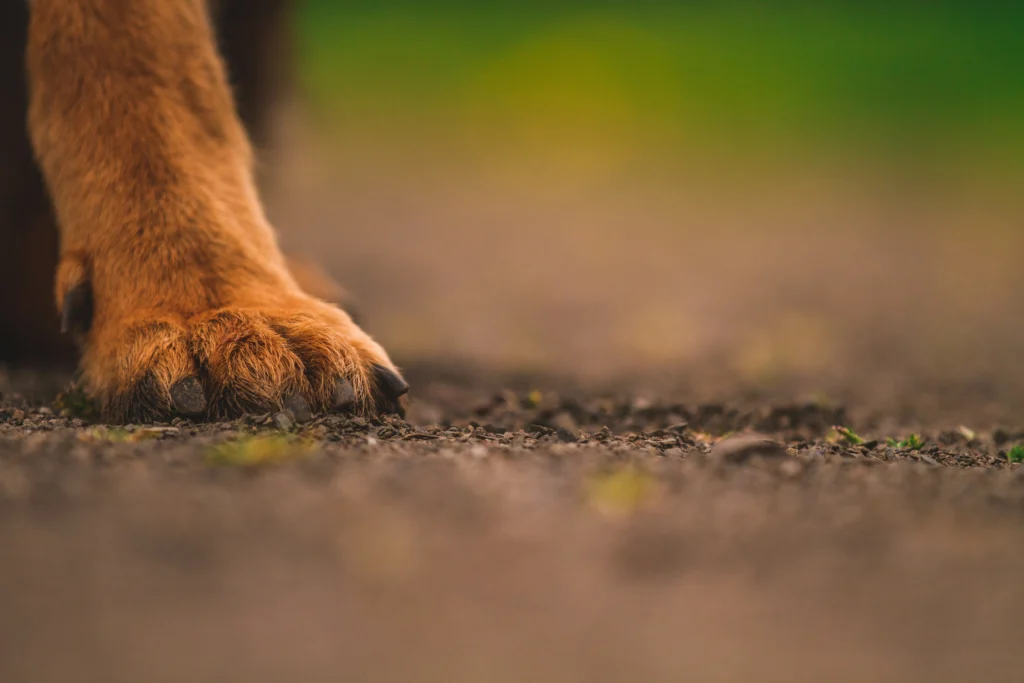
Your companion’s paws are their adventure gear, built tough yet vulnerable to everyday hazards. Those thick, textured pads beneath their feet serve as shock absorbers and protectors. Let’s explore how this unique design works—and where it can fail.
Built for Tough Terrain
A paw contains three specialized pads: metacarpal (front), primary (central cushion), and metatarsal (rear). Together, they distribute weight and reduce joint strain during movement. Over time, these areas develop calluses, creating natural armor against rough surfaces.
Despite this resilience, injuries happen. Hot asphalt in summer can blister skin within seconds. Winter salt melts ice but dries out pad tissue, causing cracks. Sharp objects like broken glass hide in grass, slicing through even thickened layers.
Everyday Threats to Watch For
Common paw issues include:
- Cuts: From debris like rocks or metal edges
- Burns: Chemical (lawn treatments) or thermal (sun-heated concrete)
- Abrasions: Repeated friction on abrasive surfaces
One study found 63% of urban pets experience paw damage annually. Recognizing these risks helps you act faster when injuries occur. Check walking routes for hazards, and rinse paws after outdoor play to remove irritants.
Recognizing and Evaluating the Severity of Paw Injuries
Noticing a limp? Quick assessment can prevent a minor scrape from becoming a major issue. Start by observing behavior—excessive licking, reluctance to walk, or visible swelling often signal discomfort. Gently inspect the area for foreign materials like gravel or glass, which may embed deeper than expected.
Identifying Signs of Pain and Bleeding
Watch for subtle cues: trembling, rapid breathing, or avoiding pressure on the affected limb. Light bleeding often stops within minutes, but persistent flow requires attention. If you spot debris lodged in the wound, don’t pull it out—this could worsen damage. Instead, rinse carefully with water to dislodge loose particles.
When to Act: Minor Versus Severe Injuries
Shallow scrapes with minimal redness might heal with basic care. Deep lacerations, however, risk tendon exposure or infection. Jagged edges or wounds longer than half an inch typically need stitches. Veterinarians at UC Davis recommend contacting your vet immediately if bleeding lasts over 10 minutes or if your companion refuses to eat.
Key distinctions:
- Minor: Surface-level marks, no swelling, normal activity
- Severe: Visible muscle/tissue, excessive bleeding, embedded objects
Immediate Actions for Dog Cut Paw
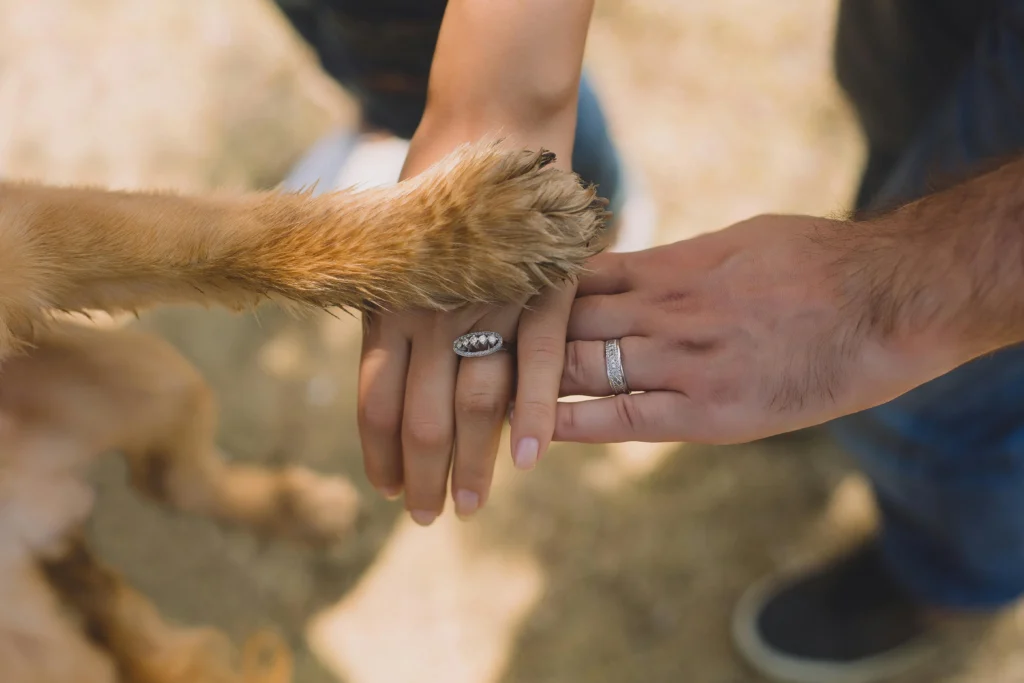
Your companion yelps during a game of fetch. Blood stains the grass near their foot. Staying calm and acting quickly can prevent complications. Follow these steps to stabilize the injury before professional care.
Stop the Flow and Clear Hazards
Apply moderate pressure with a clean towel for 5 minutes. If bleeding persists, layer gauze pads without removing soaked ones. For embedded glass shards or thorns:
- Sterilize tweezers with rubbing alcohol
- Grasp visible debris at its base
- Rinse with warm soapy water afterward
Professional Guidance Matters
Contact your vet if you notice:
| Minor Injury | Severe Injury |
|---|---|
| Superficial scrape | Gaping wound >0.5″ |
| Stopped bleeding | Pulsating blood flow |
| No limping | Yellow discharge |
Veterinary ERs report 40% of paw injuries require antibiotics if untreated for 6+ hours. Even clean cuts benefit from professional evaluation to avoid hidden damage. Keep your pet still and elevate the limb while awaiting help.
At-Home Wound Care: Cleaning, Bandaging, and Preventing Infection

Your loyal companion rests at your feet, a bandaged limb tucked close. Proper aftercare determines whether minor injuries heal smoothly or spiral into infections. Follow these methods to create a safe recovery environment while balancing comfort and protection.
Effective Techniques for Cleaning the Wound
Mix lukewarm water with a teaspoon of mild antibacterial soap. Gently pour the solution over the affected area using a clean cloth or syringe. Avoid scrubbing—pat dry with sterile gauze to prevent irritation. For stubborn debris, soak the foot briefly before rinsing again.
“Daily cleansing removes bacteria without damaging new tissue growth,” advises Dr. Ellen Torres, veterinary dermatologist.
Proper Bandaging and Use of an Elizabethan Collar
Apply non-stick gauze directly over the injury. Wrap self-adhesive tape snugly—but not tightly—around the foot, checking for proper circulation. A well-fitted elizabethan collar prevents licking while allowing normal breathing and drinking.
| Cleaning Solutions | Bandage Check Frequency | Red Flags |
|---|---|---|
| Diluted chlorhexidine | Every 4-6 hours | Swollen toes |
| Saline mixture | After outdoor activity | Foul odor |
| Vet-prescribed rinse | Morning & night | Discolored skin |
Change dressings daily, watching for pus or heat around the site. If your pet persistently tries to lick the wound, upgrade to a longer cone-style protector. Contact your vet immediately if redness spreads or mobility declines.
Preventing Future Injuries and Ensuring Proper Healing
Your loyal companion’s recovery journey doesn’t end with bandages—it’s about building lasting defenses against hazards. Proactive care reduces reinjury risks while promoting faster healing. Focus on three pillars: protection, cleanliness, and activity management.
Keeping the Bandage Clean and Dry
Moisture breeds bacteria. Use waterproof covers during outdoor trips or rainy walks. Change dressings immediately if damp, and avoid submerging the foot in water. For stubborn dirt, dab gently with saline-soaked gauze instead of scrubbing.
Winter brings hidden threats. Rinse feet after walks to remove ice-melting chemicals that crack paw pads. Summer demands vigilance too—test pavement heat with your palm before walks. If it’s too hot for you, it burns their skin.
Using Protective Gear and Managing Activity Levels
Durable booties shield against extreme temperatures and sharp debris. Look for breathable designs with non-slip soles. Pair them with paw pad balms containing beeswax or shea butter to prevent cracks.
“Rest is non-negotiable. Even energetic breeds need leashed walks until tissues fully mend,” notes Dr. Rachel Kim, rehabilitation specialist.
| Protection Type | Best For | Frequency |
|---|---|---|
| Balms | Daily moisture | Morning & night |
| Booties | Snow/heat | As needed |
| Bandage wraps | Post-injury care | Until healed |
Limit playtime to short, supervised sessions. Replace fetch with puzzle toys to engage their mind without straining healing paws. Check the injury site twice daily for swelling or discharge—early detection prevents setbacks.
Related post: Is Sucralose Bad For Dogs?
Conclusion
Quick action makes all the difference when caring for your pet’s injured foot. Clean the wound promptly, apply a secure bandage, and prevent licking with protective gear. Minor injuries often heal with consistent home care, but deep gashes or persistent pain demand immediate vet attention.
Monitor healing closely. Change dressings daily using sterile gauze, and watch for redness or swelling. If discharge appears or mobility worsens, contact an emergency vet without delay. These steps reduce infection risks and help your companion recover faster.
Remember: prevention matters. Check walking routes for hazards and consider protective booties for rough terrain. Your pet relies on you to spot early signs of trouble—stay vigilant, act wisely, and prioritize their comfort every step of the way.
FAQ
How do I stop bleeding from a paw injury?
Apply gentle pressure with a clean cloth or gauze for 5–10 minutes. Avoid removing debris until bleeding slows. If it persists, contact an emergency vet immediately.
Can I let my pet lick their wounded paw?
No. Licking introduces bacteria and delays healing. Use an Elizabethan collar to prevent this. Clean the wound thoroughly instead.
What household items can I use to clean a cut?
Use lukewarm water and mild soap. Avoid hydrogen peroxide or alcohol, as they irritate skin. Pat dry with a sterile gauze pad afterward.
When should I seek professional help?
Visit a veterinarian if bleeding won’t stop, the wound is deep, or you notice swelling, pus, or foreign objects like glass embedded in the pad.
How often should I change the bandage?
Replace it daily or if it becomes wet/dirty. Check for redness or odor, which may signal infection. Keep the area dry between changes.
Are burns on paw pads treatable at home?
Minor burns can be rinsed with cool water and covered with a sterile dressing. Severe burns require urgent vet care to prevent complications.
How can I protect my pet’s paws during walks?
Use protective booties in extreme weather or rough terrain. Check for debris like rocks or thorns after outdoor activities.
What signs indicate an infected wound?
Watch for excessive redness, warmth, swelling, or discharge. Lethargy or loss of appetite also warrants a vet visit for antibiotics.


